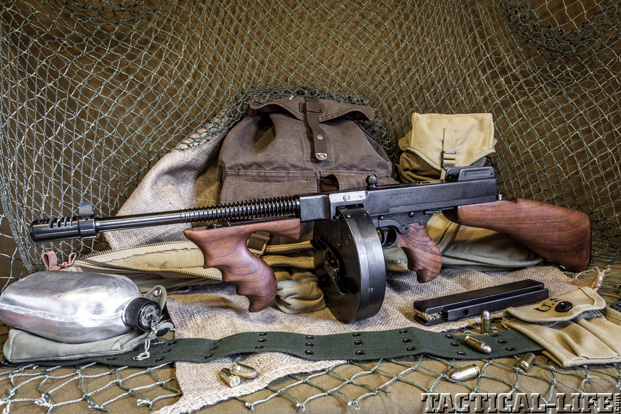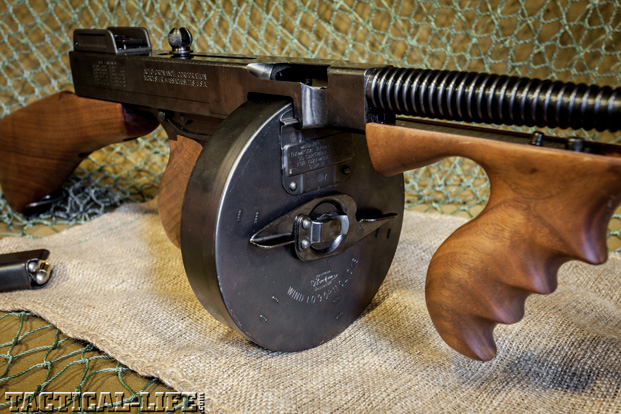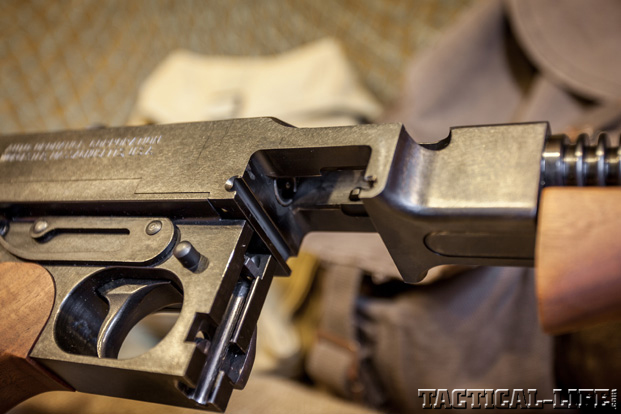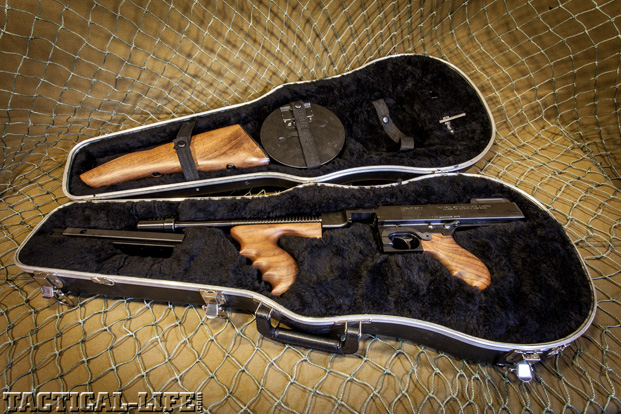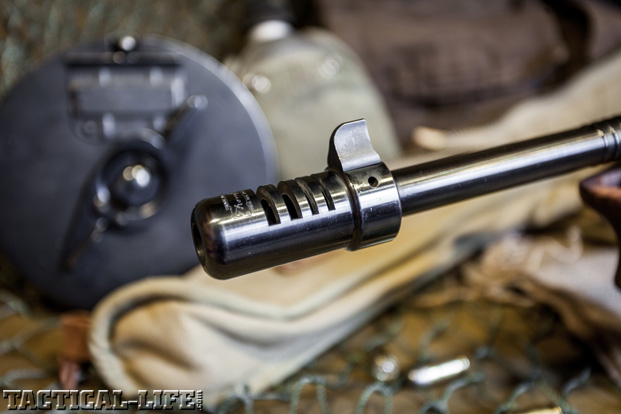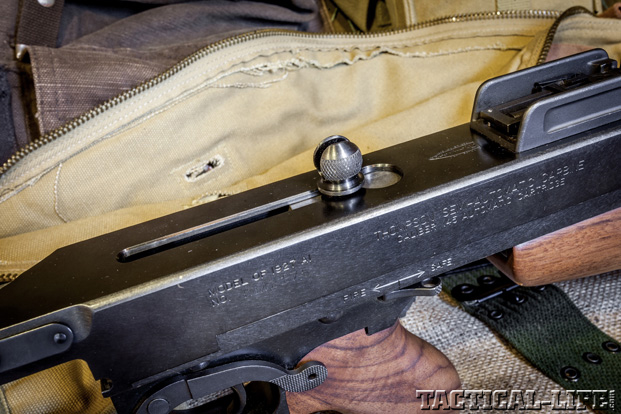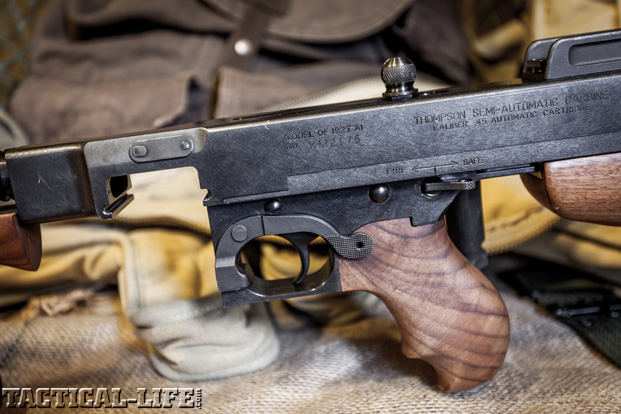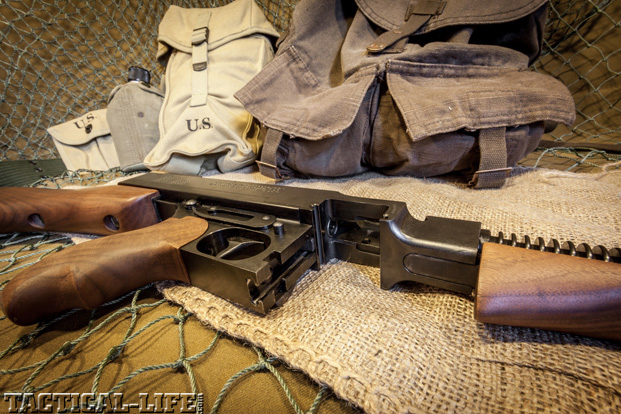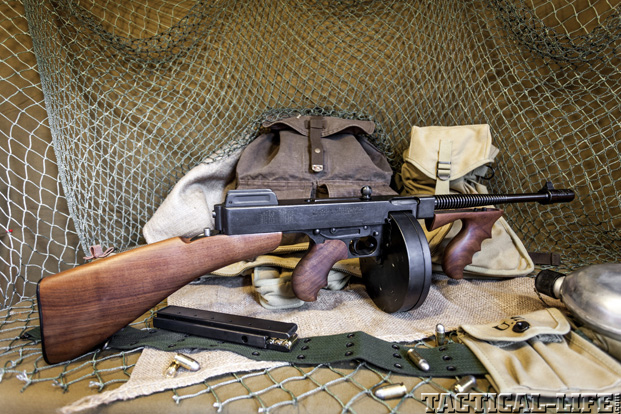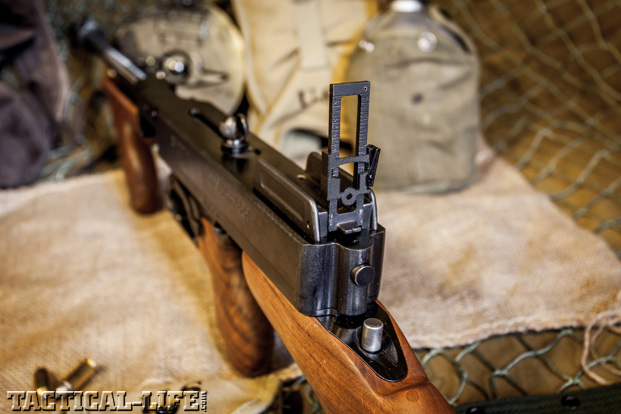The Thompson submachine gun was largely a creation of its time, and like many salient developments, it missed the first rising tide: the Tommy gun had to wait for its time to come. When it did, it rode that second wave straight into our history books.
Although his name is forever tied to the Thompson submachine gun, Brigadier General John T. Thompson had a distinguished career with the Army Ordnance Department. He was chief ordnance officer for the campaign in Cuba and saw to it that 18,000 tons of munitions were where they needed to be, on time and without incident. This was when other Army logistics were so bollixed up that the only horse in Teddy Roosevelt’s Roughrider “cavalry” unit for the charge up San Juan Hill was Roosevelt’s mount. But thanks to Thompson’s personal shepherding, Lieutenant John Parker’s “informal” Gatling gun unit had 15 weapons and supplies of ammunition, in time to play a significant role in the San Juan charge.
Thompson later supervised development of the M1903 Springfield rifle and was in charge of the board that selected the .45 ACP cartridge in response to the .38 Colt revolver’s battlefield inadequacies. He chaired the board that selected and adopted the M1911 Colt pistol. When the Great War in Europe started in 1914, the U.S. did not quickly engage, so Thompson retired and worked for Remington, in charge of setting up the Eddystone plant—the largest arms factory in the world at the time—which would later manufacture rifles for the Allies.
Advertisement — Continue Reading Below
Trench Warfare
World War I’s trench warfare illustrated the need for hand-held firepower. Thompson began experimenting with what he called a “trench broom” for close quarters conflicts. Studying several design possibilities, he was impressed with the delayed-blowback breech system designed by John Blish, working on the principle that two oiled surfaces in inclined contact will tend to seize under high pressure but slide past each other under lower pressure. Thompson and Blish, a naval commander, teamed up to form the Auto-Ordnance Company in 1916, still in existence today as part of Kahr Arms. When the U.S. entered the war in 1917, Thompson re-upped and served as Director of Arsenals until war’s end. Work at Auto-Ordnance continued, and by 1918 engineer Oscar V. Payne had worked out the major bugs in his design, dubbed the Annihilator I, and its box and drum magazines, but it was too late to field prototypes in Europe. After the war, Thompson returned to Auto-Ordnance to work on what would become the Tommy gun.
The two early experimental models were the belt-fed Persuader, developed in 1918, and the Annihilator, which fed from a box magazine and was developed between 1918 and 1919. The Thompson was one of the earliest submachine guns to incorporate a double-column, double-feed box magazine, contributing to the gun’s reliability, in addition to its established robustness and tolerance to elements and fouling. The Model 1919 was limited to about 40 units, in many variations. With a thunderous cyclic rate of 1,500 rounds per minute (rpm), it was demonstrated by Thompson at Camp Perry in 1920. As a trench broom, many early models were made sans stocks or sights.
Thompson originally pursued the concept of a light auto rifle, by using the Blish principle to avoid the weight and complexity of other systems. However, he found the .30-06 was too much. Thompson eventually decided to use standard .45 caliber ammunition—the Germans had had success with their MP 18 in 9x19mm, and the .45 was a far better manstopper.
Advertisement — Continue Reading Below
Roaring ’20s
At a board meeting in 1919, the weapon was re-named the Thompson submachine gun, a selective-fire, open-bolt weapon and the first of the genre so named. The Germans called their MP 18 a “machine pistol,” and when the Brits copied it as their Lanchester, they called it a “machine carbine.” The weapon was patented in 1920, but the major market for the weapon had ended with the war. Early sales of the M1921 (made by Colt under contract) were to postal inspectors and to the U.S. Marines. Sales to police and for export followed south of the border and to the Irish Republicans, most of which were caught at U.S. Customs. Serving as firemen for brush-fire wars, Leathernecks liked the Thompson, especially for point defense. The Model 1923 was a heavy submachine gun firing the .45 Remington-Thompson cartridge that had twice the power of a standard .45 ACP. The heavier, 250-grain bullet at about 1,450 fps had greater range—intended to rival that of the M1918 BAR—with which the Army was already satisfied. The M1923 had a horizontal front handguard, a bayonet mount and folding bipods. Had that cartridge been necked down, Thompson would have been treading around the edges of a very early assault-rifle design, but the Army saw no current need.
In 1926 a Cutts compensator was offered on the M1921AC, and in 1927 it was offered in semi-auto only. As manufactured by Colt for Auto-Ordnance, the M1921 “commercial” Thompson firing at 850 rpm enjoyed decent sales to agencies and, until the 1934 gun laws, to civilians as well. But the market was just too small. Low sales crippled Auto-Ordnance, and in 1928 Thompson was replaced as their head. Federal Laboratories took over distribution of the weapon in 1928, when the cost was $225 per weapon, $5 per 50-round drum and $3 per 20-round box magazine. Nationalist China then acquired them for use against Japanese land forces, and began producing copies of their own. And enough Depression-era mobsters acquired Thompsons to give the weapon a dirty name plus prosaic monikers like “Chicago Typewriter,” inspiring the FBI to buy their own Tommy guns beginnning in 1933, which they retained until 1976.
In 1938, the Thompson submachine gun was adopted by the Navy as the M1928, essentially an M1921 with heavier internals and a slower 720-rpm rate of fire. Contemporary Auto-Ordnance catalogs state the weapon was called the 1928 as naval issue and the M1928A1 as Army issue. Reportedly, original 1928 naval guns were simply over-stamped “1928.” Dedicated military production of the 1928A1 dropped the forward pistol grip, added sling swivels and had a lesser but still-very-good military finish. Various productions show finned or plain barrels, some with and some without a Cutts compensator. Of interest is that the M1928 was the last small arm Uncle Sam adopted that bears the year as its model designation. The M1928A1 had provisions for box or drum magazines. It usually had a Cutts compensator and annular cooling fins, employed the Blish delayed-blowback action and mounted its charging handle on the top of the receiver. The original rear sight was finely adjustable and optimistically graduated.
Advertisement — Continue Reading Below
Magazines
Military users of the M1928A1 complained about the “L” 50-round drum magazine. The British Army officially criticized “their excessive weight” and “the rattling sound they made” and shipped thousands back to the factory to exchange for box magazines. The Thompson had to be cocked, bolt retracted, ready to fire, before you could insert the drum. It attached and detached by sliding sideways, making magazine changes slow and jams difficult to clear. Reloading an empty drum was an involved process, bad enough for the 50-round, but only practical on a movie set for the 100-round drum.
By contrast, the “XX” 20-round box magazine was light, compact and quiet and could be inserted with the bolt safely closed. It was quickly attached and detached and was removed downward, making clearing jams easier. The box actuated the bolt hold-open when empty, announcing and facilitating magazine changes. An empty box was easily reloaded with loose rounds. However, users complained of its limited capacity. In the field, users frequently taped two “XX” magazines together to speed magazine changes. Two alternatives to the “L” drum and “XX” box magazines were tested: an extended 30-round box magazine and a 40-round magazine made by welding two 20-round magazines. Testers considered both superior to either the “XX” box or “L” drum. The 30-round box was approved in December 1941, to replace the 20- and 50-round magazines.
M1 Development
The major complaint of the Thompson was its weight and complexity. Not a lot could be done about the weight without a complete redesign, but the original M1921 gun had been over-engineered to capitalize on the perceived benefit of the Blish lock and as such was unnecessarily complex. The contemporary MP 18 and a dozen other subsequent designs worked with a simple inertial-lock (blowback) action. Why wouldn’t a Thompson? The staff at Savage Arms looked for ways to simplify the M1928A1, producing a blowback prototype in February 1942 that was tested at Aberdeen Proving Ground that March. Army Ordnance approved its adoption as the M1 the following month, in April. M1s were made by Savage Arms and by Auto-Ordnance and issued with the new 30-round box magazine—they would not accept the drum. The charging handle was moved to the right side of the receiver, riding in a slot. The simple rigid L-peep rear sight of the M1 proved weak: in the M1A1 model it was provided with protective ears, and the bolt was further simplified to a one-piece unit with a fixed fixing pin. Parts assemblies could be swapped, and the fire-control switches and mag release were further simplified on the M1A1.
Advertisement — Continue Reading Below
The M1 and M1A1 each had a smooth barrel without a compensator and a simple, barley-corn front sight. The now non-detachable stock was given a reinforcing bolt. The weapons’ rate of fire was approximately 600 rpm. In 1939, Thompsons cost the government $209 apiece. By the spring of 1942, design changes brought this down to $70, and in February 1944, the M1A1 reached a low price of $45, including accessories and spares. During WWII more than 1.5 million Thompsons were produced by Auto-Ordnance and Savage. Of those, a significant number were the simplified M1 and M1A1s, roughly outnumbering three to one the M3/M3A1 “Greaseguns” that had been intended to replace them.
The Thompson “trench broom” has proven itself to be a true military classic. And its popularity has continued, with newly produced semi-auto variants being offered by Auto-Ordnance today for a whole new generation of enthusiasts.
